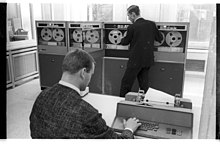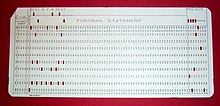Computer Operation Level-3 Suggestion V-6
Written TestComputer Operation Level-3 Suggestion V-6 by Job Edu BD
First, test yourself with the following MCQs, if you can’t do it, you can check the answer by clicking on the answer button.
Computer Operation Level-3 Suggestion V-6.
1.Why headers and footers used in MS-Word?
- To enhance the overall appearance of the document
- To Make the starting
- To make larger document more readable
- To allow page headers and footers to appear on document when it is printed
2.Which of the Following enables you of the make multiple changes in a document at once?
- Fine Command
- Replace Command
- Drager And Drop
- Copy Command
3.In Microsoft Word shortcut key CTRL+W is used for
- Update the current Web Page
- Close the current window
- open the print dialog box
- None of above
4.In Excel, Columns are labeled as?
- A, B, C etc.
- 1,2,3 etc.
- A1, A2, A3 etc
- $A$1, @a$2 etc.
5.Which one is not an input device?
- Key board
- Mouse
- Scanner
- Speaker
6.Verification of a login name and password is known as:
- Configuration
- Accessibility
- Authentication
- Logging in
7.A file that contains one or on the rules of MS word Screen?
- Tab stop Box
- Center Indent
- Left Indent
- Right Indent
8.Press….to start presentation form the beginning?
- F5
- F6
- F7
- F8
9.Function is MS Excel Must Begin with………?
- An () Sign
- An equal Sign
- A Plus Sign
- A > Sign
10.Which one used for online meeting?
- Google meet
- Gmail
- Excel
- None of above
11.Statistical calculations and preparation of tables and graph can be done using
- Adobe Photoshop
- Excel
- Notepad
- Power Point
12.The Slide that is used to introduce a topic and set the tone for the presentation is called the….
- Title Slide
- Bullet Slide
- Table Slide
- Graph Slide
13.Google Classroom is used for—–?
- Online learning
- Searching website
- Physical learning
- None of above
14.In Excel, Rows are labelled as………
- A, B, C etc.
- 1,2,3 etc.
- A1, A2, A3 etc.
- $A$1, @a$2 etch
15.Which functions in excel checks whether a condition is true or not?
- SUM
- COUNT
- AVERAGE
- IF
16.…………… lowers the selected text below the baseline and changes the selected text to a smaller font size, if a smaller size is available?
- Superior script
- Upper font
- Subscript
- Super Script
17.Which term is related with increasing or decreasing the space between characters?
- Page Number
- Spacing
- Header
- Footer
18.The effect applied to display when slides changes in slide show view is;
- Slide animation
- Custom animation
- Custom Transition
- Slide Transition
19.Which key is used to select all the text a document?
- CTRL +T
- CTRL +F
- CTRL +A
- CTRL +N
20.Shortcut CTRL+F is used to
- Navigation Dialog box with activating search document option
- pen page setup Dialog box with activating layout tab
- Open Font Dialog box with activating font tab
- Open file Save as Dialog box
Short Questions-
21.What is the functional key to display save-as box?
22.Full form of NOS?
23.The geometric arrangement of devices on the network is called?
24.Where is the CPU and memory located?
25.An image on a computer screen is made up of?
26.What is a half byte also called as?
27.What do we use to change the appearance and positioning of text document in MSWord?
28.What kind of scheme is the HTTP protocol?
29.Which type of storage device is a BIOS?
30.Collecting personal information and effectively posing as another individual is known as the crime of?
1.Why headers and footers used in MS-Word?
D. To allow page headers and footers to appear on document when it is printed
2.Which of the Following enables you of the make multiple changes in a document at once?
B. Replace Command
3.In Microsoft Word shortcut key CTRL+W is used for
B. Close the current window
4.In Excel, Columns are labeled as?
A. A, B, C etc.
5.Which one is not an input device?
D. Speaker
6.Verification of a login name and password is known as:
C. Authentication
7.A file that contains one or on the rules of MS word Screen?
B. Center Indent
8.Press….to start presentation form the beginning?
A. F5
9.Function is MS Excel Must Begin with………?
B. An equal Sign
10.Which one used for online meeting?
A. Google meet
11.Statistical calculations and preparation of tables and graph can be done using
B. Excel
12.The Slide that is used to introduce a topic and set the tone for the presentation is called the….
A. Title Slide
13.Google Classroom is used for—–?
A. Online learning
14.In Excel, Rows are labelled as………
B. 1,2,3 etc.
15.Which functions in excel checks whether a condition is true or not?
D. IF
16.…………… lowers the selected text below the baseline and changes the selected text to a smaller font size, if a smaller size is available?
C. Subscript
17.Which term is related with increasing or decreasing the space between characters?
B. Spacing
18.The effect applied to display when slides changes in slide show view is;
D. Slide Transition
19.Which key is used to select all the text a document?
C. CTRL +A
20.Shortcut CTRL+F is used to
A. Navigation Dialog box with activating search document option
Short Questions-
21.What is the functional key to display save-as box?
Ans: F12
22.Full form of NOS?
Ans: Network Operating system
23.The geometric arrangement of devices on the network is called?
Ans: Topology
24.Where is the CPU and memory located?
Ans: Motherboard
25.An image on a computer screen is made up of?
Ans: Pixels
26.What is a half byte also called as?
Ans: Nibble
27.What do we use to change the appearance and positioning of text document in MSWord?
Ans: Formatting
28.What kind of scheme is the HTTP protocol?
Ans: Request/Response
29.Which type of storage device is a BIOS?
Ans: Primary
30. Collecting personal information and effectively posing as another individual is known as the crime of?
Ans: Identity theft
Try Now: Computer Operation Level-3 Vol-5
"You will pass just by asking the mentioned questions, it's not like that at all, but chances are upto 80% to get common. This is just a suggestion. This question is not copied from any board question"
A computer operator is a role in IT which oversees the running of computer systems, ensuring that the machines, and computers are running properly. The job of a computer operator as defined by the United States Bureau of Labor Statistics is to “monitor and control … and respond to … enter commands … set controls on computer and peripheral devices. This Excludes Data Entry.”
Overview
The position has evolved from its beginnings in the punched card era. A Bureau of Labor Statistics report published in 2018 showed that, in the public sector, a major employer of those categorized as Computer Operator was United States Postal Service. In the private sector, companies involved in data processing, hosting, or related services employed computer operators at an even higher rate. The states with the highest employment for computer operators, as of 2018, are: New York, Texas, California, New Jersey, and Florida.
Job role description
The former role of a computer operator was to work with mainframe computers which required a great deal of management day-to-day including manually running batch jobs; however, now they often work with a variety of different systems and applications. The computer operator normally works in a server room or a data center, but can also work remotely so that they can operate systems across multiple sites. Most of their duties are taught on the job,[citation needed] as their job description will vary according to the systems they help to manage.
Responsibilities of a computer operator may include:
- Monitor and control electronic computer and peripheral electronic data processing equipment to process business, scientific, engineering, and other data according to operating instructions.
- Monitor and respond to operating and error messages.
- May enter commands at a computer terminal and set controls on computer and peripheral devices.
- Excludes “Computer Occupations” (15-1100) and “Data Entry Keyers” (43-9021).
The role also includes maintaining records and logging events, listing each backup that is run, each machine malfunction and program abnormal termination. Operators assist system administrators and programmers in testing and debugging of new systems and programs prior to their becoming production environments.
Modern-day computing has led to a greater proliferation of personal computers, with a rapid change from older mainframe systems to newer self-managing systems. This is reflected in the operator’s role. Tasks may include managing the backup systems, cycling tapes or other media, filling and maintaining printers. Overall the operator fills in as a lower level system administrator or operations analyst. Most operations departments work 24×7.
A computer operator also has knowledge of disaster recovery and business continuity procedures. Formerly, this would have meant sending physical data tapes offsite, but now the data is more than likely transmitted over computer networks.
Specializations
Console operator
A console operator interacts with a front panel or a multi-user system’s console
- entering system commands via a keyboard
- entering commands for a subsystem, e.g., HASP, via a keyboard
- replying to requests for information
- taking actions such as mounting computer tapes that were “pulled” by a tape librarian
- supervising a tape operator, especially when there is a non-specific mount request.
These individuals would be trained to use specialized equipment related to their duties.
Beyond the IBM System/360 era
One example of specific hardware used by a console operator is the IBM 3066 Model 2 system console, which included a light pen[citation needed] as an interface device. Other then-new features were:
- replaced “most switch, pushbutton, and indicator functions”
- as with the 165’s Model 1, had a microfiche document viewer, a feature introduced for the 360/85’s console.
A console printer (up to 85 characters per second) to provide hard copy was optional when the console was in display mode, and required when it was in printer-keyboard mode.[citation needed]
Peripherals operator
A peripherals operator uses dedicated peripheral equipment connected to computer(s) such as printers, scanners, or storage devices for data transfer to and/or from computers.
Tape operator

Historically, tape operators were in charge of swapping out reels of paper tape, reels of magnetic tape or magnetic tape cartridges that stored computer data or instructions.
Card reader operator

Depending on the type of card reader, either the “9-edge” or the “12-edge” was towards the card reader operator inserting the cards – but the deck of cards was always placed face down.
The United States Army’s wordings were:
- Load cards in hopper face down, 12 edge out, column 1 to the left (1977)
- Place cards in hopper face down with 12 edge to operator (1981)
- 12 edge / face down : IBM orientation.
- nine-edge (also face down) : some other card readers.
Printer operator
In addition to filing or delivering computer printouts, a printer operator at times loads standard or, as directed by a console operator or a remote console, specialized forms.
Tab operator

The tab operator (short for tabulating) would be responsible for preparing and operating tabulating machines to produce statistical results. Hardware such as the IBM 08x sorter series[citation needed] were called tabulating equipment. The 1980 census specifically counted Tab operators (“Tabulating-machine operator”).
Tape librarian
A tape librarian is responsible for the management, storage, and reporting involving data storage tapes. The tape librarian would develop and/or maintain an organization system for the storage and retrieval of tapes, and assist in disaster recovery. Additionally, the librarian would ensure the integrity of the tapes, and submit recommendations for replacement when needed. Some examples of equipment a tape librarian may work with are the IBM 3850.
Post review
Finding Your Post
NSQF / NTVQF Computer Operation Level-3 Suggestion V-6, NSQF NTVQF, Computer Operation Level-3 Suggestion V-6, Job Edu BD, NSDA BTEB, NSDA / BTEB Suggestion Vol-1
NSQF / NTVQF Computer Operation Level-3 Suggestion V-6, NSQF NTVQF, Computer Operation Level-3 Suggestion V-6, Job Edu BD, NSDA BTEB, NSDA / BTEB Suggestion Vol-1
NSQF / NTVQF Computer Operation Level-3 Suggestion V-6, NSQF NTVQF, Computer Operation Level-3 Suggestion V-6, Job Edu BD, NSDA BTEB, NSDA / BTEB Suggestion Vol-1
NSQF / NTVQF Computer Operation Level-3 Suggestion V-6, NSQF NTVQF, Computer Operation Level-3 Suggestion V-6, Job Edu BD, NSDA BTEB, NSDA / BTEB Suggestion Vol-1
NSQF / NTVQF Computer Operation Level-3 Suggestion V-6, NSQF NTVQF, Computer Operation Level-3 Suggestion V-6, Job Edu BD, NSDA BTEB, NSDA / BTEB Suggestion Vol-1
NSQF / NTVQF Computer Operation Level-3 Suggestion V-6, NSQF NTVQF, Computer Operation Level-3 Suggestion V-6, Job Edu BD, NSDA BTEB, NSDA / BTEB Suggestion Vol-1



